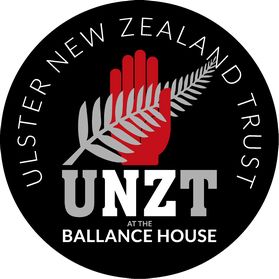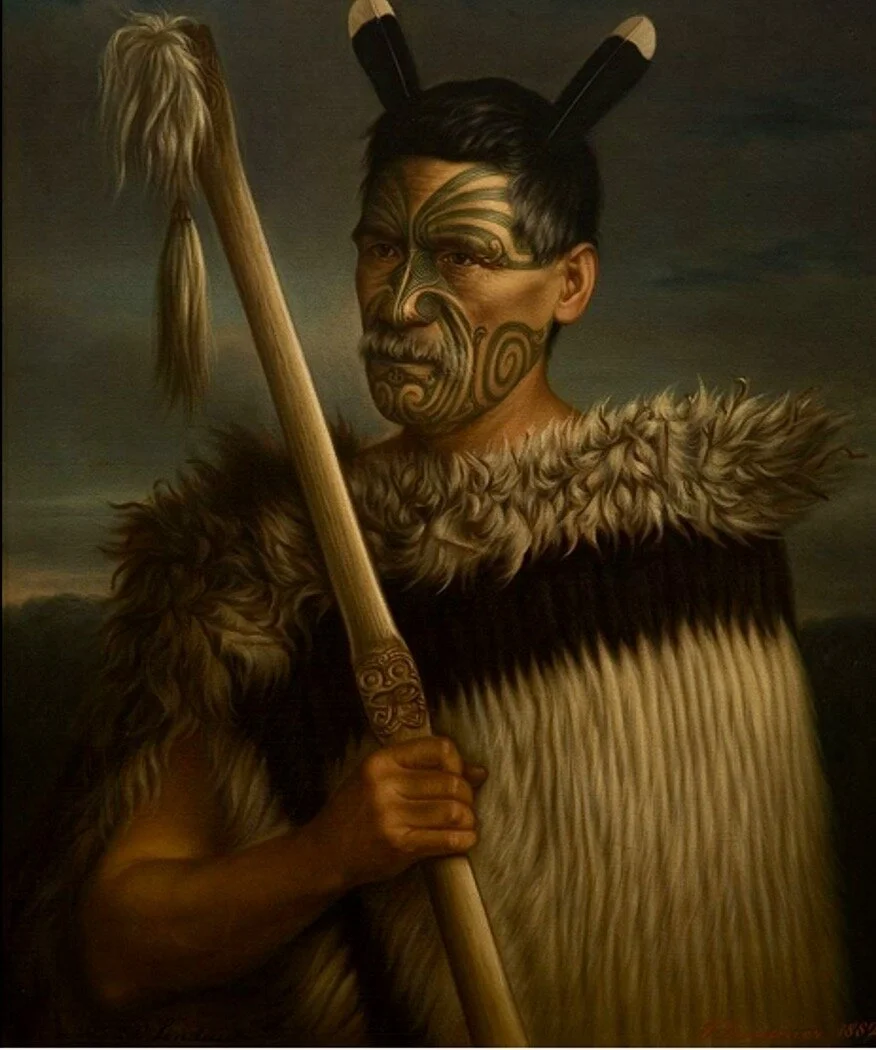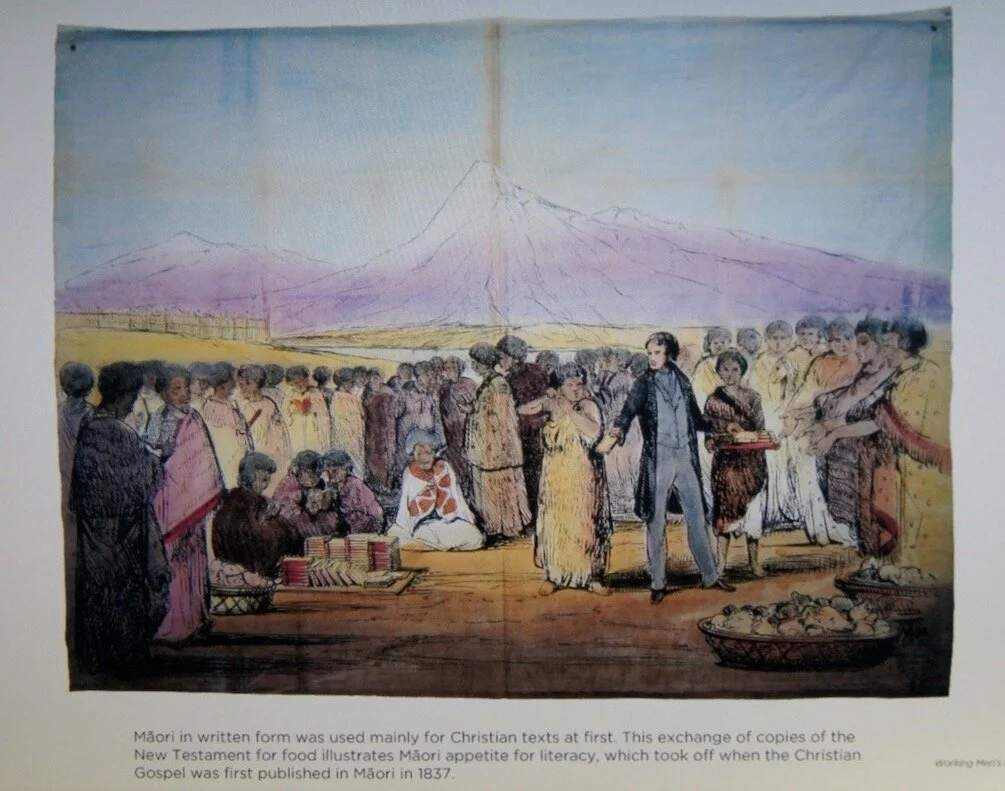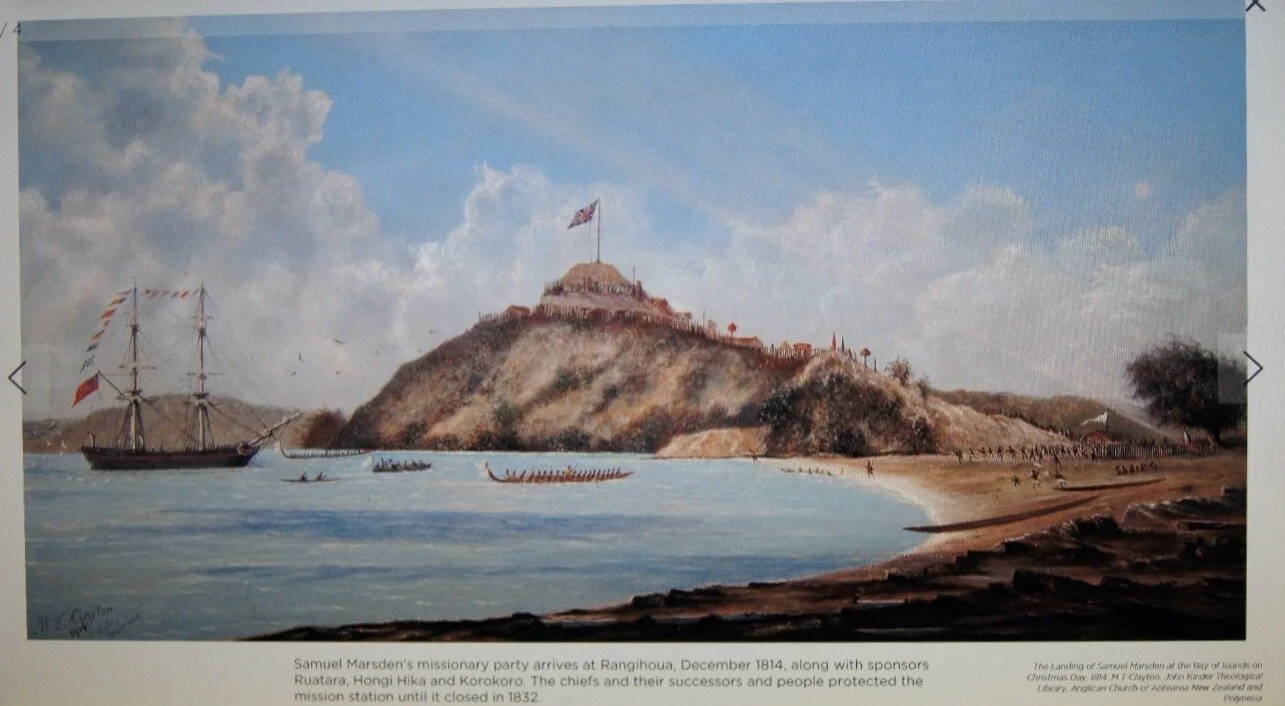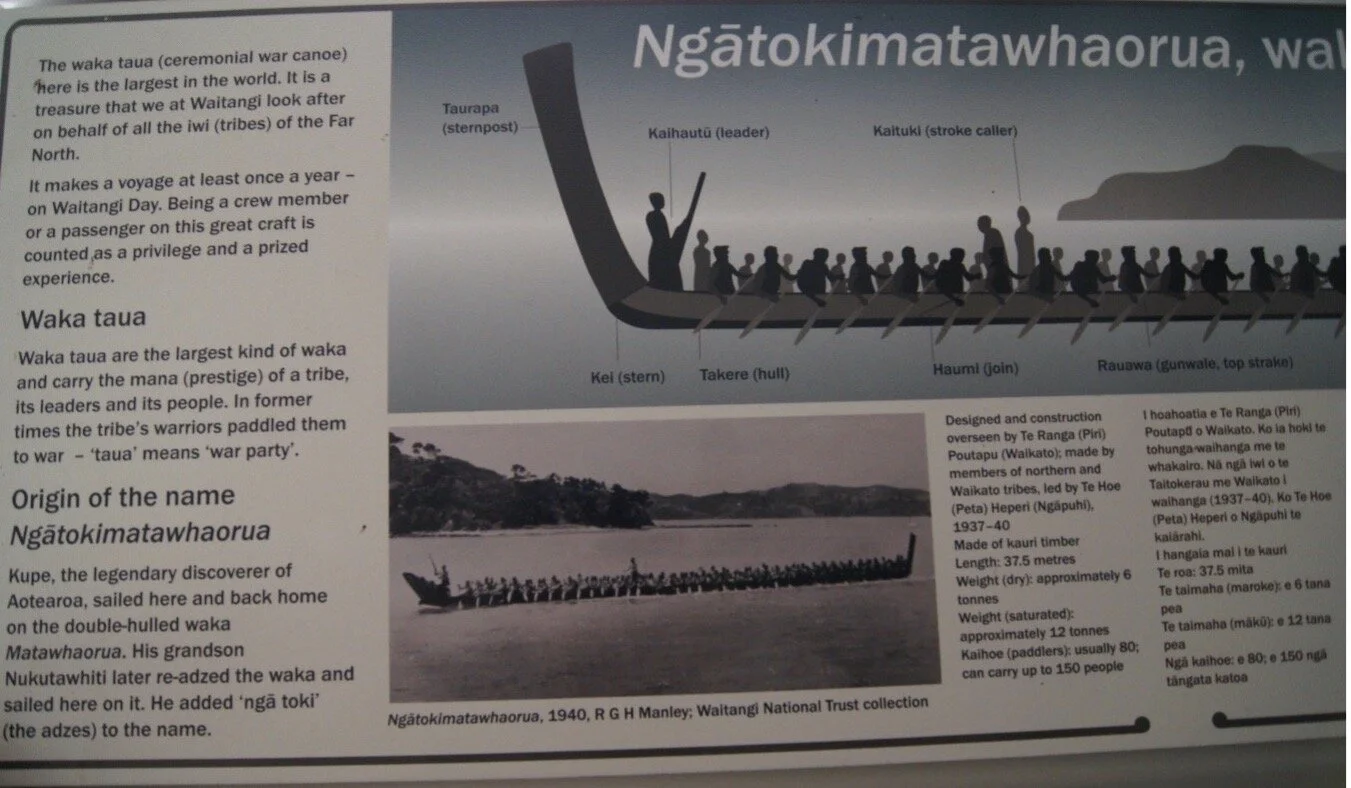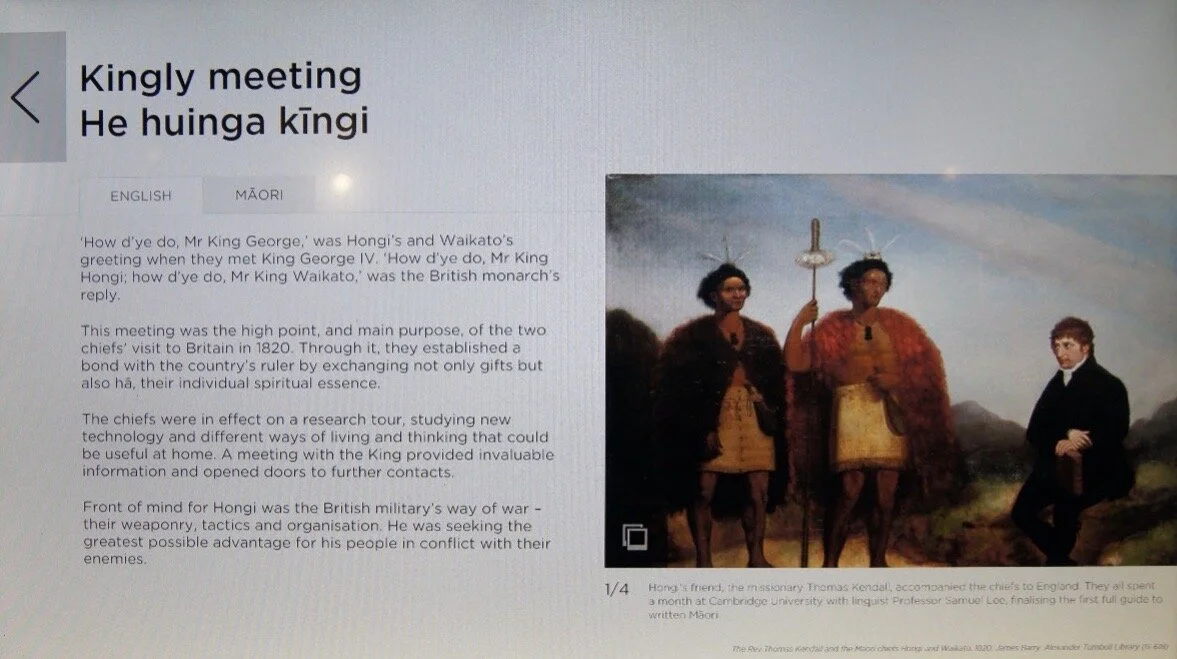creative commons attribution 4.0 international
The New Zealand Māori originated with settlers from eastern Polynesia, who arrived in New Zealand in several waves of canoe voyages at some time between 1250 and 1300 CE.
the haunui, A Double Hulled ocean-going canoe called a Waka hourua. photo: te toki waka hourua
A single hulled ocean-going canoe with outrigger displayed at Auckland War Memorial Museum
Over several centuries in isolation, the Polynesian settlers developed a unique culture that became known as the "Māori", with their own language, a rich mythology, distinctive crafts and performing arts. Early Māori formed tribal groups, based on eastern Polynesian social customs and organisation. Horticulture flourished using plants they introduced, and later a prominent warrior culture emerged.
Maori Pa - often a fortified settlement with palisades and defensive terraces. photo don hitchcock
Visiting the Wharenui ( Meeting House) at Waitangi Treaty Grounds - Challenge to Visitors – have you come in peace?
Welcoming us to the Wharenui
Typical Maori Carvings displayed at Auckland War Memorial Museum
A Greenstone Mere (Hand weapon). Displayed at Waitangi Treaty Grounds
The Marae at Paki Paki, Hawkes Bay. the Maori meeting ground in front of the wharenui
Entrance to the Maori Village at Whakarewarewa thermal reserve, Rotorua
The interior of a Maori pa displayed at Auckland Art Gallery
Accepting the Challenge that we had come in Peace
A Maori Chief. Rewi Manga Maniapoto, by Gottfried Lindauer, on display at the Auckland Art Gallery. Rewi Manga Maniapoto (1807–1894) was a Ngāti Maniapoto chief who led Maori Kīngitanga forces opposing the New Zealand government Invasion of Waikato during the New Zealand Wars.
The arrival of Europeans to New Zealand starting from the 18th century brought enormous changes to the Māori way of life. Māori people gradually adopted many aspects of Western society and culture. Initial relations between Māori and Europeans were largely amicable, and with the signing of the Treaty of Waitangi in 1840, the two cultures coexisted as part of a new British colony. Rising tensions over land acquisition by the European settlers led to conflict from 1845 to 1872.
A Waka Taua (Ceremonial War Canoe)
Flying the current New Zealand Flag (top), the British Union Flag (right yardarm), and the first New Zealand Te Kara flag of 1834 (left yardarm)
Trading Food Supplies for New Testaments from the Bible written in Maori
taken at the waitangi treaty grounds
At the foot of the Flagstaff at the Waitangi Treaty Grounds is the plague that marks the spot where the Treaty of Waitangi was signed.
Some Maoris adopted Christianity
Treaty of Waitangi 6 February 1840 Displayed at Te Kōngahu Museum of Waitangi, Waitangi Treaty Grounds
Maori Chiefs meet King George IV in England. Displayed at Te Kōngahu Museum of Waitangi
Photos: Ashley Eves, except those credited.
A chronology of key events in New Zealand’s development as an independent nation:
c. 1000 AD - Original discovery of New Zealand by the Polynesian mariner Kupe.
c. 1200-1300 AD - Ancestors of the Maori arrive by canoe from other parts of Polynesia. Their name for the country is Aotearoa (land of the long white cloud).
1642 - Dutch explorer Abel Tasman sights the south island and charts some of the country's west coast. It subsequently appears on Dutch maps as Nieuw Zeeland, named after the Dutch province of Zeeland.
1769 - British captain James Cook explores coastline, also in 1773 and 1777.
1815 - First British missionaries arrive.
1840 - Treaty of Waitangi between British and several Maori tribes pledges protection of Maori land and establishes British law in New Zealand.
1845-72 - The New Zealand Wars, also referred to as the Land Wars. Maori put up resistance to British colonial rule.
1893 - New Zealand becomes world's first country to give women the vote.
1898 - Government introduces old-age pensions.
1899 – 1902 The South African War of 1899-1902, often called the Boer War (sometimes the Second Boer War), was the first overseas conflict to involve New Zealand troops.
1907 - New Zealand becomes dominion within British Empire.
1914 - Outbreak of World War I. New Zealand commits thousands of troops to the British war effort. They suffer heavy casualties in the Gallipoli campaign in Turkey in 1915.
1939-45 - Troops from New Zealand see action in Europe, North Africa and the Pacific during World War II.
1947 - New Zealand gains full independence from Britain.
